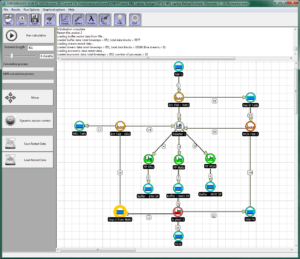Nuclear Research: Waste Disposal Drivers
New nuclear Waste and clean-up 10 August 2017
‘Waste Disposal Drivers for a Range of Nuclear Power Systems’ is my PhD title, but like many PhD titles, this doesn’t give much insight into what I actually do.
In real words, the project involves quantitatively assessing five nuclear fuel cycles to draw comparisons between them, focusing on properties and masses of spent fuel, the wastes produced, and system economics. In doing this I hope to determine what drives fuel cycle selection; for example, if a system is economically favourable, produces large amounts of highly mobile radionuclides, or would require a significantly larger disposal facility.

The project aims to perform comprehensive appraisals of the chosen nuclear systems and their disposal requirements. Coming from a chemistry background I found the project a huge change from the lab based projects I was used to. Now my work encompasses a very broad spectrum, covering most parts of the nuclear fuel cycle including getting to grips with reactor physics and neutronics codes.
I have spent the last year of my project working with the National Nuclear Laboratory and using a variety of different software and codes to generate reactor and fuel cycle models (see image). All of my models are based upon real reactors; however, these are kept relatively simple in terms of the programme setup. For example, each fuel cycle is based upon an initial stock of uranium ore, and does not consider the use of existing fuel stocks, legacy wastes or reactors. The fuel cycles considered include a basic open fuel cycle, open fuel cycle + fast burner reactor, and fast breeder reactor fleets – which span a whole range of technological readiness levels.
Policy makers are required to make decisions regarding nuclear energy strategy and in doing so must consider trade-offs between properties of systems, including economics, security of fuel supply, and disposal requirements (to name a few). Uranium, though currently abundant, is a finite resource and we may need to move to more fuel-conservative systems, such as fast reactors, if resources are unable to sustain the global nuclear industry [1]. While fast reactors are able to generate over 60 times more energy from the initial uranium ore [2], as well as managing the radiotoxicity of waste, they are not yet at commercial deployment and will require significant investment before they can be deployed on this scale.
Nuclear waste is now perceived by the public to be the biggest issue surrounding nuclear power [3] and it is considered both unsafe and unethical to continue generating nuclear energy without a disposal plan. With all this in mind, a holistic assessment of the nuclear strategies that may be deployed in the future will help inform continuing research, investment, and policy decisions.
References
[1] Dungan, K. et al., 2017. Uranium from seawater – Infinite resource or improbable aspiration? Progress in Nuclear Energy, 99.
[2] Van Goethem, G., 2016. 10 – Euratom research and training program in Generation-IV systems: Breakthrough technologies to improve sustainability, safety and reliability, socioeconomics, and proliferation resistance. In Handbook of Generation IV Nuclear Reactors. pp. 241–281.
[3] Poortinga, W. et al., 2006. Public Perceptions of Nuclear Power, Climate Change and Energy Options in Britain: Summary Findings of a Survey Conducted During October and November 2005,


Leave a Reply